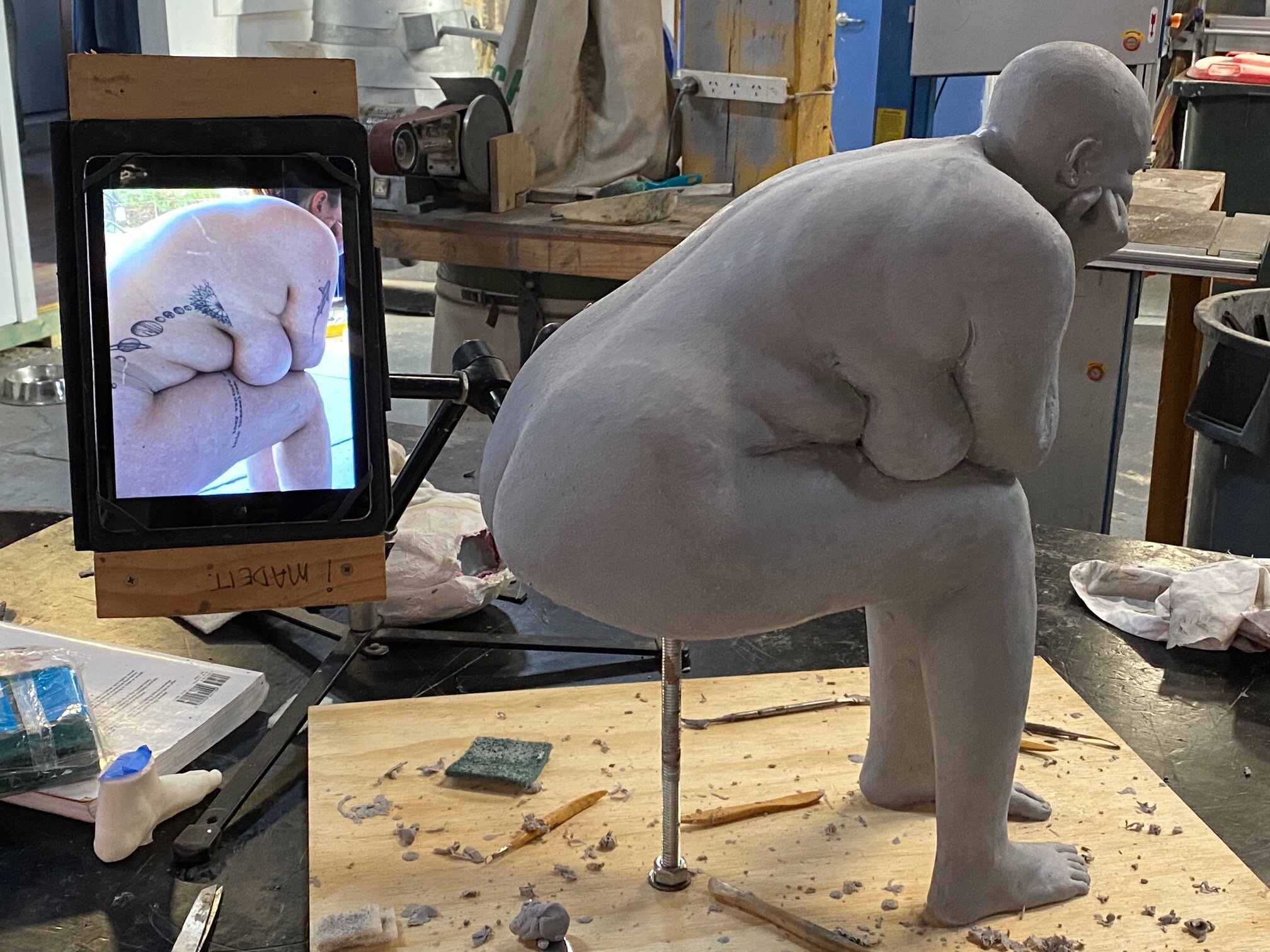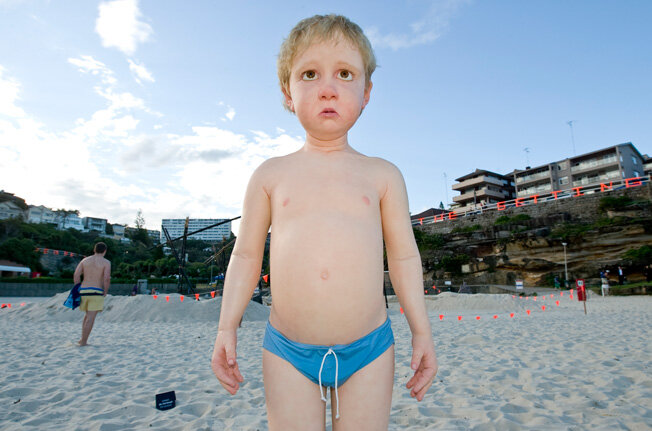Talking Practice: Paul Trefry
Figure 1
We chatted with artist Paul Trefry (pictured above) about his practice of creating hyper realistic sculptures. Have a read!
We’d love to know your background and your journey to becoming a sculptor:
As a child I grew up in an inner west area of Sydney called Rodd Point. In the early days I would make things all the time, building things from cardboard boxes and old pieces of timber that I would find in laying around the house. I started sculpting at the age of 13, I would dig around mum’s garden looking to find some clay and then copy images I found in books.
Where did you study sculpture?
I haven’t studied sculpture, I had studied Graphic Design at Randwick TAFE, my sculpting has come from being self-taught, making lots of mistakes and learning by them, observation is the best skill any hyperrealist sculptor can have.
Tell us about your practice:
All of my sculptures are social comments, issues that I like to address through hyperrealism.
My medium of choice is silicone rubber; silicone is the closest medium we have to replicate skin being translucent it gives the skin a natural depth, the silicone also allows hair to be inserted into it giving the effect that’s its growing from the skin.
I love to play with scale with my sculptures, steering away from life size pieces with large pieces have such an impact when viewed.
Tell us about your creative process?
My process for a sculpture starts with an idea, generally something I have seen or possibly heard people talking about, the next step is to visualize the idea in a way that’s sculptural.
I then search through my books and the Internet for photographic reference.
I start sculpting a small maquette to work our shapes and emotion, this process can take weeks, constantly changing and evolving the sculpture.
Once I’m happy with what I have I then start on the full-scale sculpture. This sculpture can take a few weeks up to a couple of months depending on the size.
Once the sculpture is made, I break it down and mould the pieces with silicone jacket moulds. Then the moulds are pulled apart and cleaned and ready for the silicone. I pre pigment the silicone a skin colour and pour it into the moulds. Once dry they are pulled apart and the seams on the cast pieces cleaned, patched and them painted.
I make all my eyes and punch all the hair one by one; this can take weeks. The hair is cut styles and clothes made.
Above: figure 3 & 4
Where is your Studio?
My studio is in Leichhardt, which I have on my own, it’s a great space with very high ceilings and lots of natural daylight, the studio is located in a huge film centre so I’m surrounded by lots of very creative people.
What project/s are you working on at the moment?
At the moment I’m working on a new ½ scale piece about how women are body shamed by the press and media.
I also had a solo show “Flesh for Thought” at the Wellington St Gallery in Waterloo and have just recently sold Man in a Cube at Sotheby’s in New York.
I also have 2 pieces in and exhibition at the Giant Art Gallery in Bournemouth UK.
Figure 5
How have you found lockdown? Has it affected your practice, have you been able to continue working?
I have been very lucky not to have been affected by COVID and have kept busy working all through the lockdown.
What inspires your practice?
My inspiration comes from life and other artists like Ron Mueck, Sam Jinks, Jamie Salmon and Banksy.
As well as being an exhibiting sculptor, you also do work for TV and film. What does that entail? Would we have seen any of your work on the big or small screen?
I have been working in the film industry since 1986, producing models, props and animatronics.
What that involves is building items, which generally can’t be found of specialised models.
I have worked closely with Ridley Scott, Angelina Jolie, Russel Crowe, James Cameron and Baz Lurhmnan on their feature films.
We’d love you to share a highlight of your career, what would one be?
I have been fortunate enough to have been able to travel the world because of my work.
One of the most memorable moments of my career was on Angelina Jolie’s film Unbroken.
We had built a swimming animatronic shark for one of the scenes, during rehearsal we swam the shark up behind one of the stunt men and scared the life out of him.
Read and see more:
Visit Paul’s website here.
Follow Paul on Instagram here.
Read Paul’s Artist Profile here.
Figure 6
Image Captions:
Figure 1: Paul Trefry with his sculpture Gladys always knew Arthur was late, 2013, mixed media.
Figure 2: Paul Trefry’s sculpture Homeless still human at the Incinerator Prize exhibition at Incinerator Gallery, Aberfeldie, Victoria.
Figure 3 & 4: Work in progress photos from Paul Trefry’s studio.
Figure 5: Paul Trefry, Unwanted, mixed media.
Figure 6: Paul Trefry, Little Lost Boy, 2009, mixed media.





